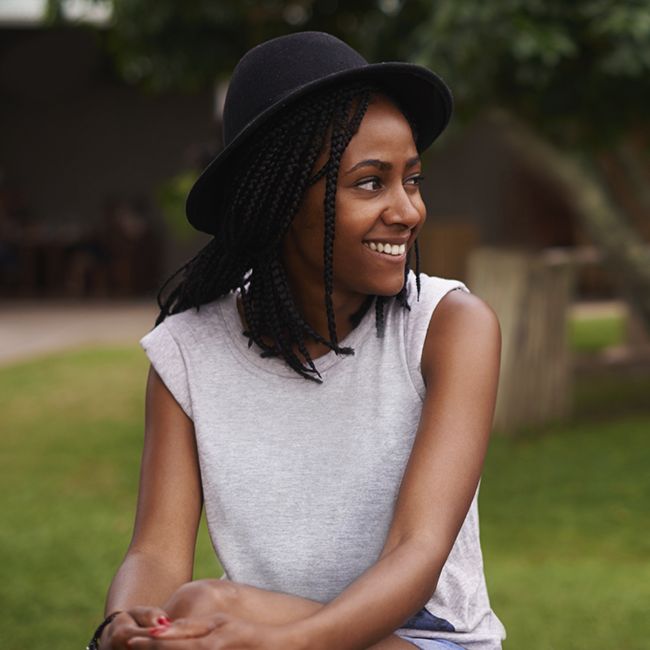
Despite their purpose, protective styles can do damage like anything else. Quite often damage can occur as a result of neglect. One of our readers, Yvonne21 from Curly Q&A, recently inquired about coming out of a protective style with dry hair.
Question
What am I doing wrong? I last relaxed my hair in 2009. My hair is just below shoulder length now. But I recently put it in a box braid protective hair style. And when I took it out my hair is completely unmanageable. It’s fizzy, very dry and my curl structure seems damaged.
Answer
It can be a few things that are causing your frizz, dryness, and damage. How were you caring for your hair while it was in box braids? Hair in box braids still needs nurturing. Also, after removing extensions your hair will need some extra TLC and a break before another installation. We will share how to care for protective styled hair, what to do after removal, and what you can do if you notice damage.
How to care for hair while in box braids
Textured hair is delicate and requires a lot of care, and too often when we rock a protective style we assume it is protected so all the good practices get thrown out the window.
Cover up at night
Covering your hair at night is still necessary, especially with box braids so either sleeping on a satin pillowcase or throwing on a stain bonnet are essential at night. It not only protects your hair, but it also keeps those edges looking fresh.
Clean & moisturize your scalp
Maintaining a clean scalp and moisturizing regularly are essential. Whether cleaning your scalp with dry shampoo or using regular shampoo, do not assume the style will suffice for cleaning especially if you are spraying your hair and braids to keep them moisturized. You can cause buildup and clog your scalp’s pores. Cleaning regularly is still necessary.
Protect your scalp from the sun
Protecting your scalp from UV rays and dryness is important, so whether using a braid spray or your own concoction, do not neglect your scalp when moisturizing your braids.
Prevent scalp buildup
Steer clear of unnatural products when hair is protected and enlist the help of natural oils that will not cause buildup or clog your scalp.
Don’t risk your edges
Make sure the style is not too tight. Yes, you want it to last but not at the expense of your edges as they will suffer as a result of braids too tight.
Don’t leave it in too long
Do not leave your protective style in longer than required, as it can cause matting, locking, or bald spots. Don’t let penny pinching leave you with hair worse off than before you started.
How to care for hair after removing extensions
Start by clarifying
Clarify your hair and scalp to remove any buildup that occurred when your hair was up and away. A scalp exfoliation may be necessary.
Deep treat
Make sure to deep condition and use a protein treatment. Use heat to really allow it to penetrate, and a protein treatment is a good idea too.
Remove split ends
A trim may also necessary, especially if you did not do one before the protective style. You want to ensure your hair is healthy and free of split ends.
That is a serious no-no. Hair may be dead, but it still needs water and time to rest from the tension of a protective style.
Give your hair a break
Last but certainly not least, let your hair have some down time. Too often people who regularly wear protective styles will have another style installed within days of removing the previous one. That is a serious no-no. Hair may be dead, but it still needs water and time to rest from the tension of a protective style. Give your hair at the very least two weeks before another protective style.
How to fix damaged hair after removal
You may need a trim, a protein treatment, and a heat-infused deep treatment to help rejuvenate your curls. All three will cut down on dryness, frizz, and damage. Steer clear of heat for a while (yes, longer than a month”> and give it a few weeks to see the changes.
